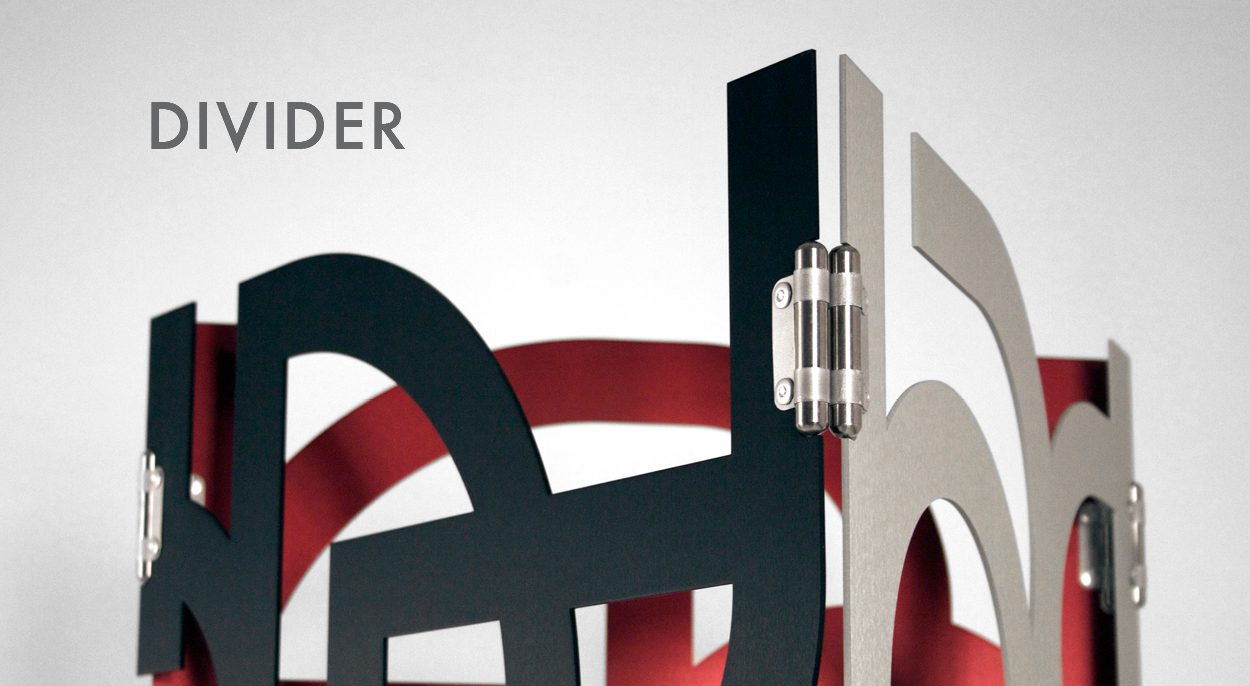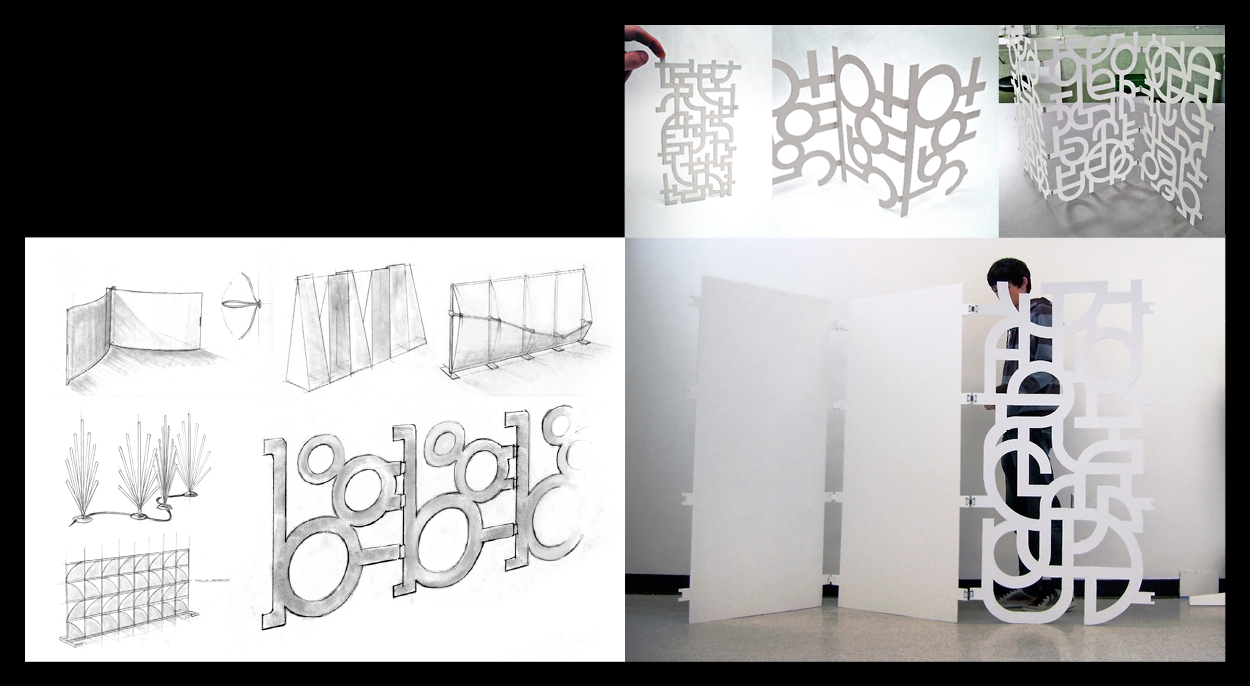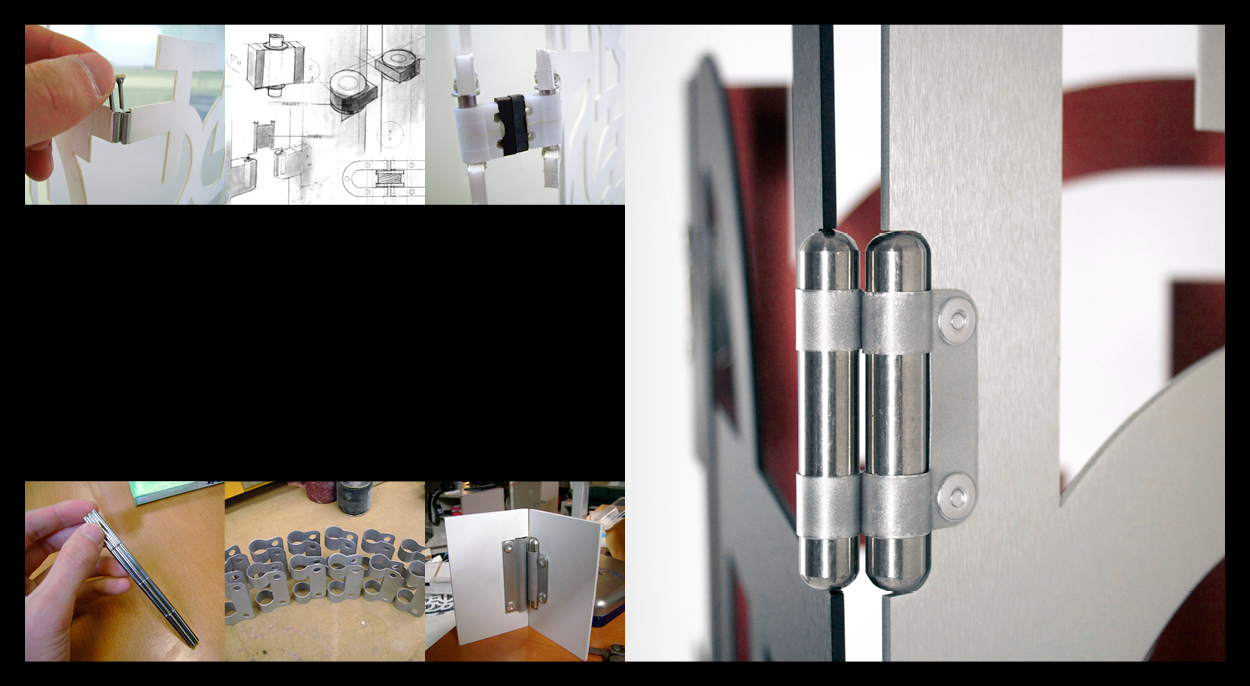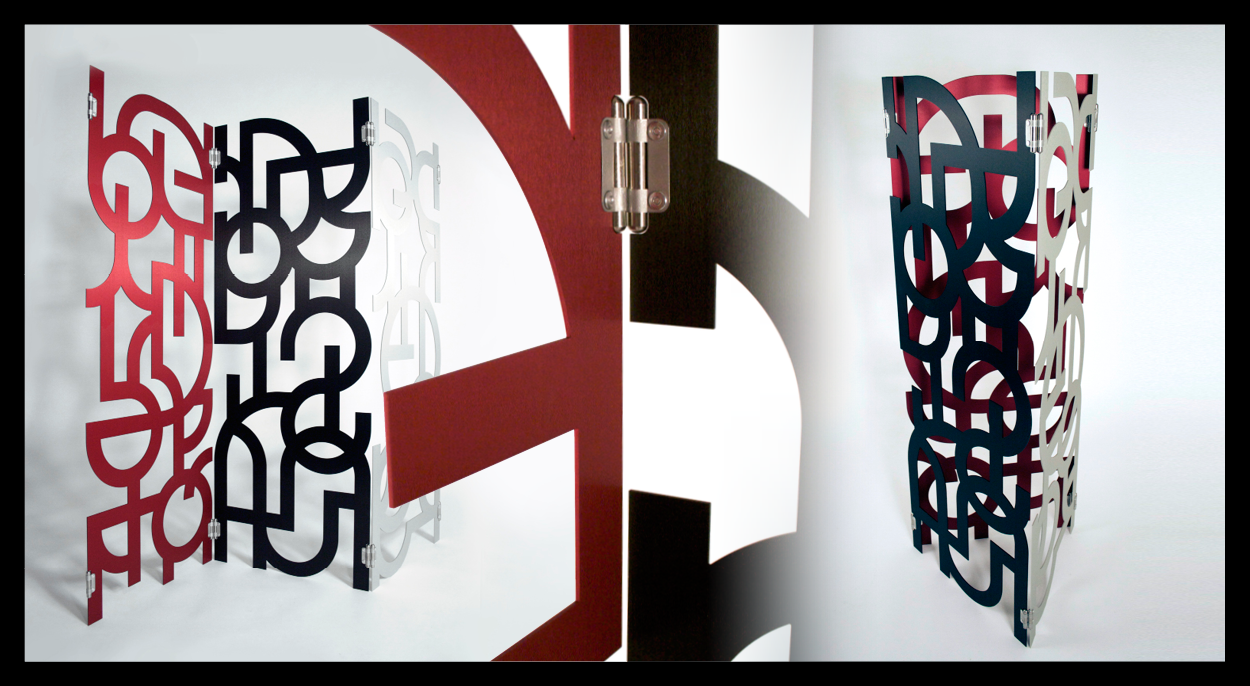Divider
Equipped with powerful magnetic ‘hinges’, these modular panels create a self-assembling and self-supporting screen that can be easily reconfigured or stowed. Polarity alignment is ensured by matching the faces of the brackets’ binder posts.

A single line is all it takes to activate space, be it on the surface of a page or within the expanse of a room. This modular screen employs typographic forms to create interest in both area and volume.

The process to create a modern divider began by stretching the definition of a room divider—as a privacy screen, partition, and art piece.
After generating concepts that featured interesting materials and interactions, a certain typography-inspired concept stood out as a poetic reference to the room divider’s history of simplicity of function and ornateness of form. There may be nothing more quintessentially two-dimensional than written language, and when enlarged to the human scale, it serves as functional art.

The ability to easily disassemble and reconfigure the panels of the scale models became a crucial design feature to add utility and interest to the screen’s final design.
Equipped with powerful magnetic ‘hinges’, these modular panels create a self-assembling and self-supporting screen that can be easily reconfigured or stowed without any separate or moving parts. Polarity alignment is ensured by matching the faces of the brackets’ binder posts.

Each module can be reconfigured for length, rotation, color, and the way the assembled screen ultimately activates negative space within a room as a screen, as a sculpture, or against a wall.